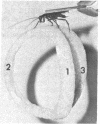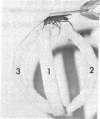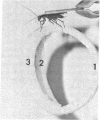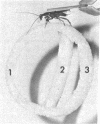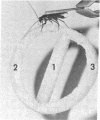Abstract
The cockroach, Periplaneta americana, running on a Y-ring globe, moves downwind if an air current is directed toward the head. However, if the air current carries sex pheromone, then upwind movement is elicited. This orientation behavior is apparently a mechanism to facilitate the orientation of males searching for pheromone-secreting females.
Full text
PDF


Images in this article
Selected References
These references are in PubMed. This may not be the complete list of references from this article.
- Farkas S. R., Shorey H. H. Chemical trail-following by flying insects: a mechanism for orientation to a distant odor source. Science. 1972 Oct 6;178(4056):67–68. doi: 10.1126/science.178.4056.67. [DOI] [PubMed] [Google Scholar]
- Kennedy J. S., Marsh D. Pheromone-regulated anemotaxis in flying moths. Science. 1974 May 31;184(4140):999–1001. doi: 10.1126/science.184.4140.999. [DOI] [PubMed] [Google Scholar]
- WHARTON D. R., MILLER G. L., WHARTON M. L. The odorous attractant of the American cockroach, Periplaneta americana (L.). I. Quantitative aspects of the response to the attractant. J Gen Physiol. 1954 Mar;37(4):461–469. doi: 10.1085/jgp.37.4.461. [DOI] [PMC free article] [PubMed] [Google Scholar]



